Kraków 2012-03-20
Państwowe Zakłady Lotnicze - Communication Equipment Factory - Mielec.
1938-1950 Part 1.
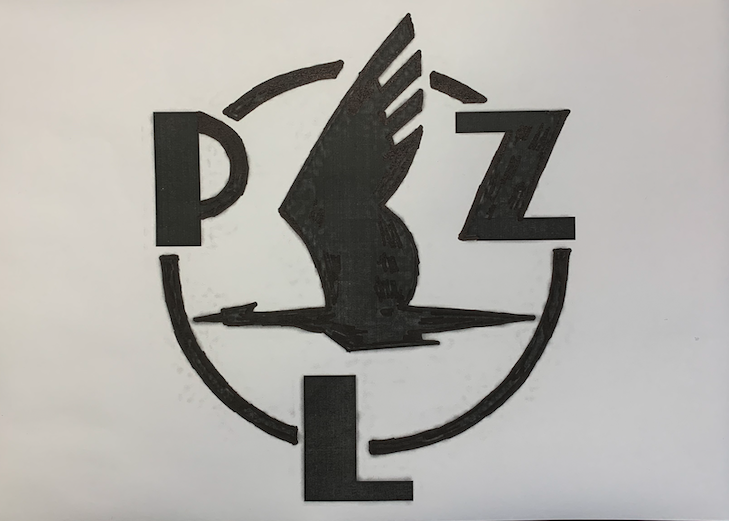
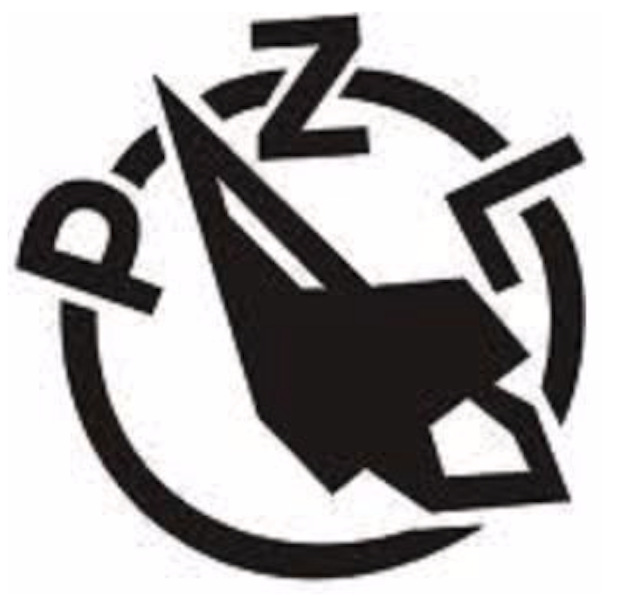
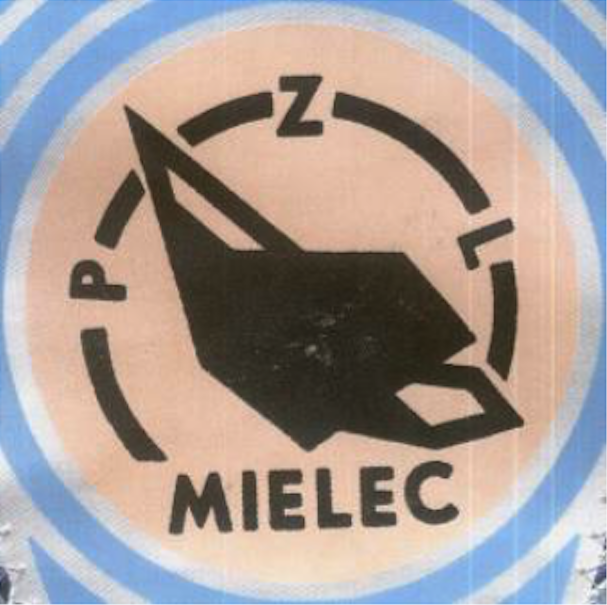
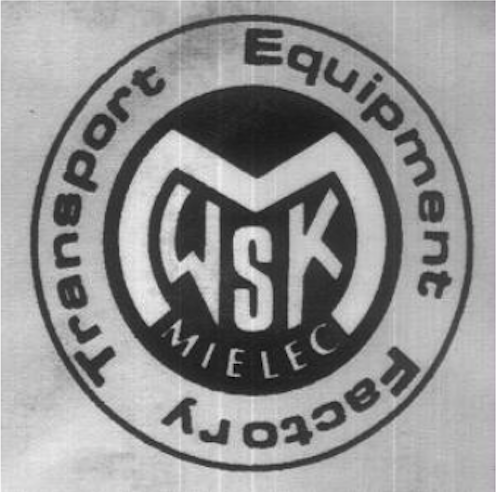
Logo of WSK Mielec Communication Equipment Factory in Mielec, of which PZL Mielec was a part. The name "Wytwórnia Sprzętu Komunikacyjnego" was also a good cover for the main military production.
PZL Mielec.
Państwowe Zakłady Lotnicze (PZL) was organized in Warsaw in 1928 on the basis of the Central Aviation Workshop (CWL). Their first product was the licensed French Wibault 70 fighter plane, which allowed them to master the technology of building planes with a metal structure. Soon, a talented constructor, Zygmunt Puławski, designed a series of modern high-wing fighter aircraft: PZL P.1, P.6, P.7 and P.11. The P.11 plane was completed after the constructor died in a plane crash. The P.7 and P.11 planes were mass-produced and were standard equipment of the Polish Military Aviation from 1933 to 1939. The last variant, PZL P.24, was exported to 4 countries around the world. The following were also mass-produced: the PZL.23 Karaś light bomber and the modern PZL.37 Łoś medium bomber. One of the best bombers before the Second World War. PZL plants also built, in small numbers, sports planes (PZL.5, PZL.19, PZL.26) and liaison planes (PZL Ł-2). Before 1939, PZL also developed designs and prototypes of fighter planes, including the PZL.50 Jastrząb and the PZL.44 Wicher passenger plane. PZL was the largest Polish pre-war aircraft manufacturer.
From 1934, the main PZL plant was located in Warsaw at Okęcie in Paluch and was designated PZL WP-1 (Wytwórnia Płatowców No. 1). As part of the construction of the Central Industrial District, aviation factories were established: in Mielec and Rzeszów.
1936 year.
In 1936, an aircraft factory was established in Mielec as part of the COP (Central Industrial District). The factory was renamed Państwowe Zakłady Lotnicze - Wytwórnia Płatowców No. 2. The construction of the factory began on September 1, 1937. The construction of the factory resulted in the development of the infrastructure of the city of Mielec. A housing estate for employees and single-family houses (villas) for management were built. Many new cobbled streets were built. The construction of the factory itself was completed in 1938.
As early as 1938, the production of aircraft began. In Mielec, it was decided to place the production of PZL-37 Łoś bombers. Until the German army attacked the Republic of Poland, the construction of 6 bombers from components delivered from the factory in Warsaw was completed.
The PZL-37 Łoś bomber was not the only aircraft to be produced at PZL Mielec. The second was to be the PZL-46 Sum light reconnaissance bomber. The plane was developed by the talented Polish constructor engineer Stanisław Prauss, and the first flight was performed by the test pilot Jerzy Widawski in August 1938. The PZL Warszawa plant built only two prototypes. The plane turned out to be successful and it was presented in 1938, at the Paris Aviation Show. At the end of 1938, the Command of the Air Force of the Republic of Poland ordered 160 copies, and on March 28, 1939, this number was increased to 300 machines. At the same time, Bulgaria was talking about the purchase of 12 PZL-46 Sum machines. PZL Mielec was chosen as the production site. But preparations for production were slow, because priority was given to the production of fighter planes, and Mielec was busy with the production of PZL-37 Łoś bombers. Nevertheless, in July 1939, the PZL-46 production line in Mielec was ready and the production of the first elements began.
The attack of the German army on the Republic of Poland resulted in the seizure of the factory in Mielec and the discontinuation of the construction of both the PZL-37 Łoś and the PZL-46 Sum, whose first serial flight was planned for September 1939.
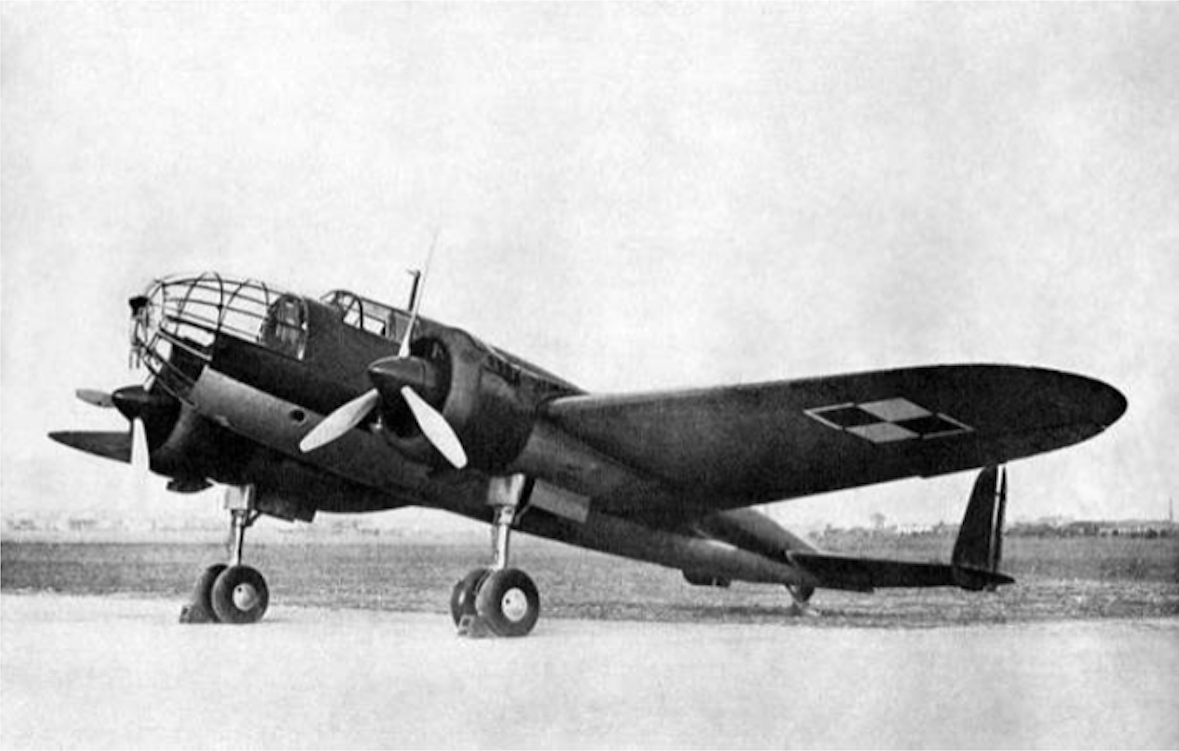

The invasion of the German army on Poland - September 1, 1939.
On September 1, 1939, the German army invaded the Republic of Poland, starting the Second World War. The city and the factory were seized by the occupant. In the period 1939 - 1944, the factory worked for the occupant, producing components for combat aircraft. In the summer of 1944, Russian troops entered Mielec. The factory was occupied by the new occupant and produced for war purposes. The Russian army returned the plant to the Polish nation only in 1946.
The PZL Mielec Communication Equipment Factory was established on the premises of pre-war aviation plants. This plant was the basic source of employment for people from Mielec and the surrounding communes, and a center that shaped life in the city.
S-1. The first Polish plane after the Second World War. 1945.
In the spring of 1945 (according to other sources, already in December 1944) Lieutenant Eugeniusz Stankiewicz, a lecturer at the United Military Aviation School in Zamość, addressed the head of the school, Lt. Col. Mikołaj Goloborodźki (former commander of the 6th Red Army Aviation School), from a request for the possibility of developing a training and liaison aircraft. Eugeniusz Stankiewicz's initiative was accepted. - Let them try. They have a job. We will decide what to do next, ”said one of the Soviet officers. At that time, a team to develop a training and liaison plane was created. Apart from Eugeniusz Stankiewicz, the team included: 2nd Lt. Zdzisław Cymera and 2nd Lt. Władysław Rutkowski.
The design of the aircraft received the designation S-1, after Eugeniusz Stankiewicz, although the team probably used a different designation in the first weeks. In June 1945, the team working on the plane was moved to Mielec. It was a top-down decision. At that time, Mielec was also administered by Soviet officers. But undoubtedly, the workshop conditions in Mielec were definitely better.
The team used some elements from Po-2 and UT-2 airplanes in their work. First of all, the M-11 Shevtsov engine. Work on the plane was very fast. As early as August 1945, the construction of the S-1 prototype No. 45-001 began. A prototype for static testing was not built. Thanks to the constructor's energy, diligence of co-workers and dedication of the workshop employees, the machine was built in 3.5 months. The prototype was ready in November 1945. The complete documentation of the aircraft was also ready.
On November 15, 1945, at the factory airport in Mielec, the S-1 plane was flown by the Russian pilot, Piotr Kondratienko. In December 1945, the partially disassembled S-1 plane was transported to Warsaw by road. According to other sources, at the beginning of April 1946, the plane made a flight from Mielec to Warsaw. Nevertheless, the plane landed at Okęcie Airport and Mokotów Airport and was handed over to the Military Aviation Command.
The hook for the plane turned out to be its construction without aerodynamic and strength calculations. Therefore, the plane could not (allegedly) be approved. As if these calculations could not be completed. Nevertheless, the plane performed well and successfully passed further tests. The constructor Eugeniusz Stankiewicz also participated in these tests.
On May 14, 1946, Lieutenant Engineer Eugeniusz Stankiewicz made another flight on the S-1 aircraft. In the turbulent atmosphere over Warsaw, the plane crashed at ul. Chałubiński and ul. Nowogrodzka (ul. Chałubińskiego and al. Jerozolimskich). The pilot was slightly injured, but the plane was (apparently completely) wrecked.
This accident was a perfect excuse to stop any further work on this structure. It was openly stated that the plane was underdeveloped. It wore the features of an amateur construction. The documentation needed to be verified. The airframe should be rebuilt from scratch.
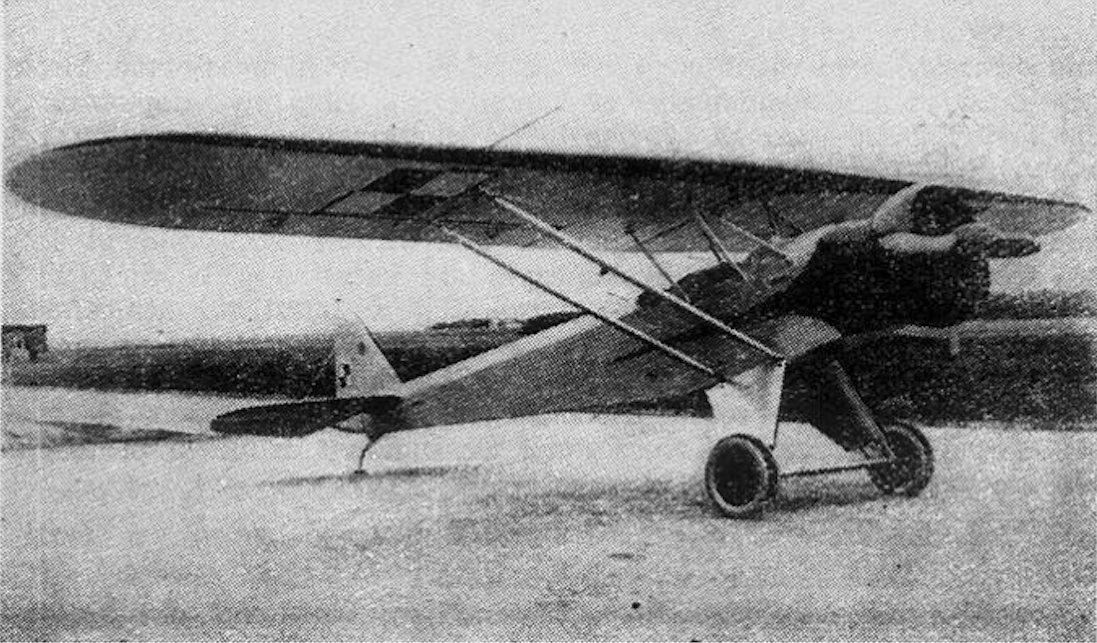
LWD Szpak. 1948 year.
In October 1944, in Lublin, under the supervision of Eng. Tadeusz Sołtyk, a team of designers gathered to design a four-seater liaison-disposable aircraft, called Szpak-1. At the beginning of 1945, the office was moved to Łódź. On April 1, 1945, the Experimental Aviation Workshop was established in Łódź. Due to the greater possibilities of workshops in Łódź, the construction of Szpak-1 was abandoned in favor of a more mature structure. The LWD Szpak-2 aircraft was a development of the original design using a mixed structure, instead of just a wooden one.
Already on October 28, 1945, the prototype was flown at Lublinek Airport by the pilot Antoni Szymański. The landing gear broke on the first landing and the official flight test was completed on November 10, 1945. This aircraft was the first aircraft built and flown in Poland after the end of World War II and received SP-AAA registration. It was built in a single copy. For the construction, parts of former German components were used, primarily the Bramo Sh 14 engine and pipes from crashed planes. In the period from May 10, 1946 to April 5, 1948, Szpak-2 SP-AAA made 500 flights carrying 250 passengers. The plane turned out to be very successful. In the period 1947 - 1948, it was a government company aircraft. After decommissioning, it finally ended up at the Aviation Museum in Krakow.
The successor was the LWD Szpak-3, which after the PZL S-1 became the third Polish post-war aviation structure. First flown on December 17, 1946, registered as SP-AAB. The plane was used as available at the Ministry of Foreign Affairs, later at the LWD as a factory one, and finally it found its way to the Aviation Museum in Krakow. In 1947, the prototype of the LWD Szpak-4A was created as a two-seater aerobatic plane. The basic change was the replacement of the wooden hull truss with the steel one made of welded pipes. It was flown on May 28, 1947. However, it was not allowed for acrobatics, but was used as a factory company aircraft in the period 1947 - 1948. The plane had an open cabin with seats next to each other.
On its basis, the four-seat LWD Szpak-4 T tourist plane was created, the first factory copy of which was flown on January 5, 1948 by the pilot Ludwik Lech. The construction of the series was ordered by the Ministry of Communications at WSK Mielec, according to the LWD documentation. The production was completed on 10 copies, with registration numbers SP-AAF, G, H, I, K, L, M, N, O, R. These were the first mass-produced airplanes in post-war Poland. One of the produced SP-AAF units was exhibited at the Poznań International Fair in May 1947. Nine copies of the Szpak-4 T were later handed over to aeroclubs, except for the SP-AAG, which was decommissioned in 1955 and went to the Aviation Museum in Krakow. Thus, the LWD Szpak-4 T was the first mass-produced aircraft in PZL Mielec and in Poland after the Second World War.
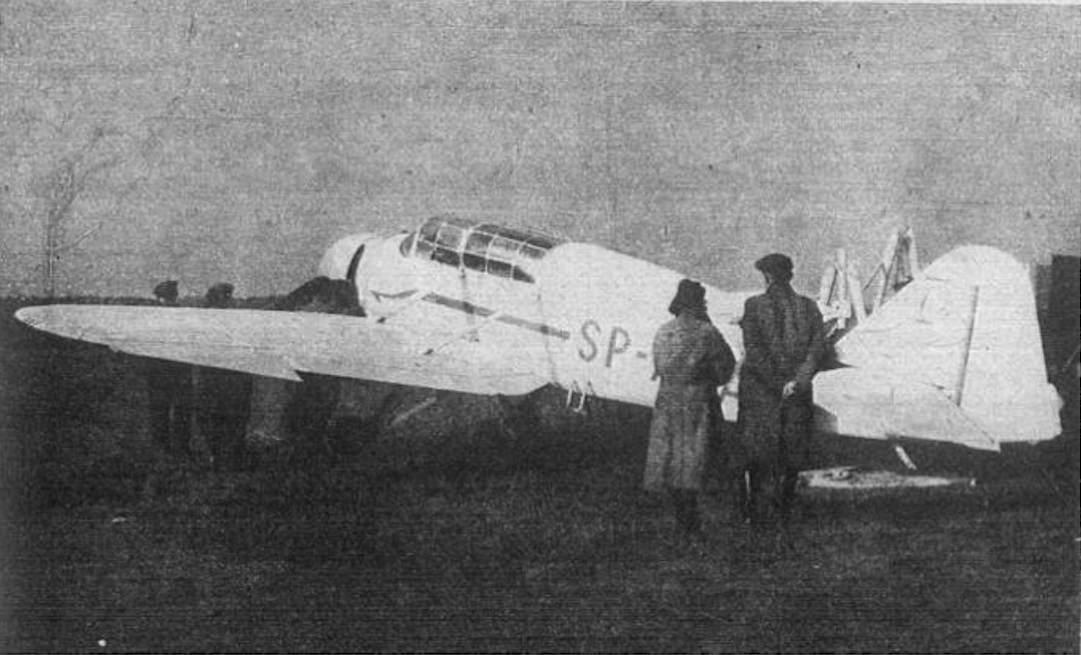
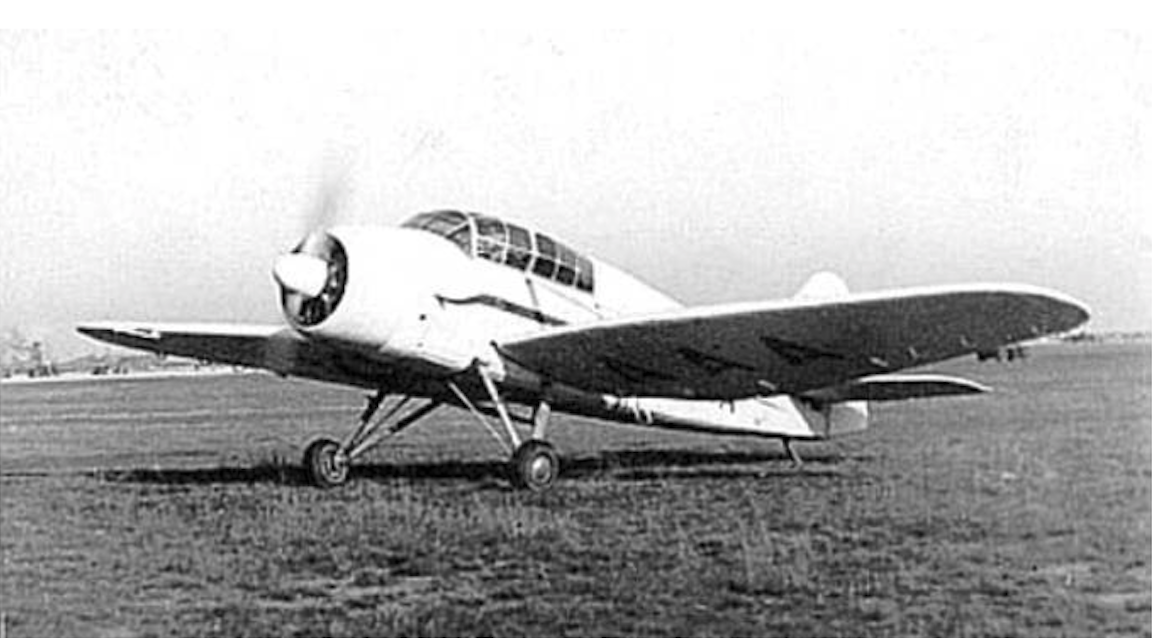
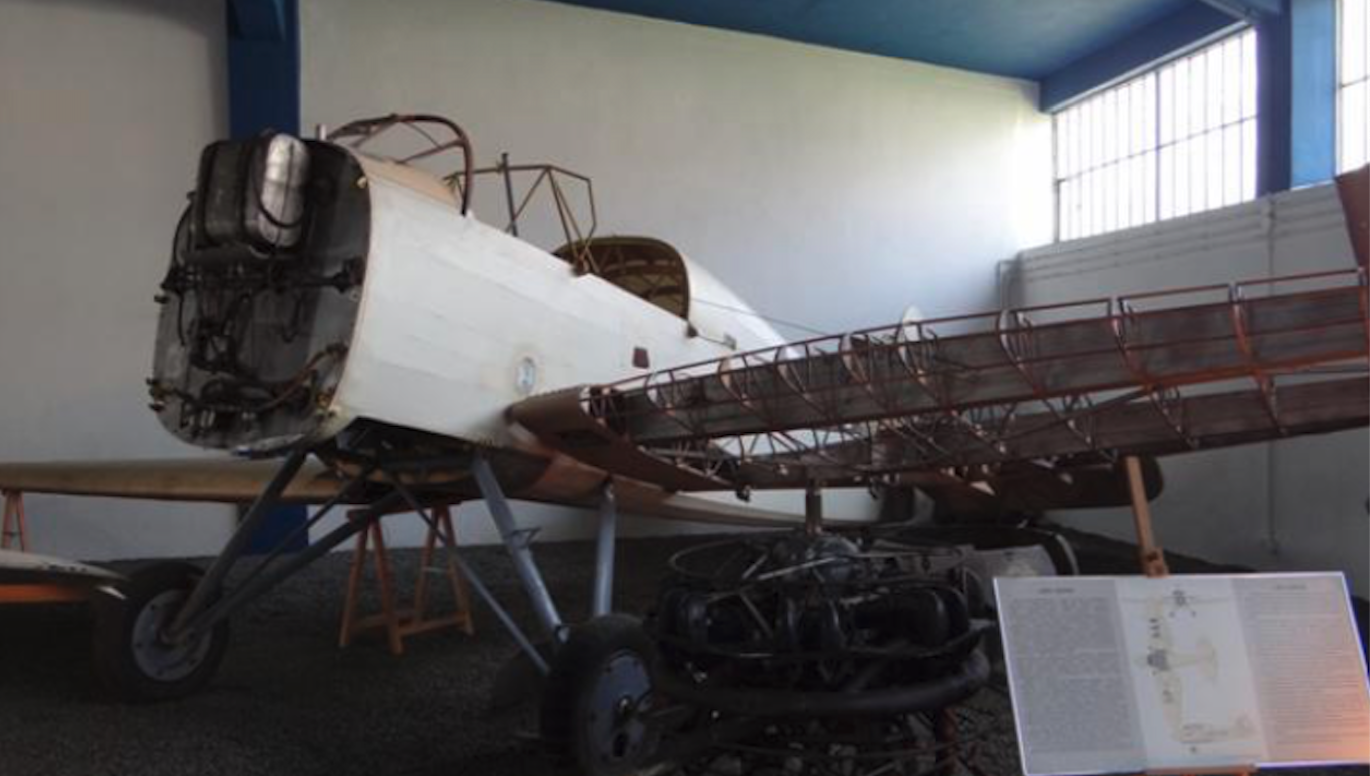
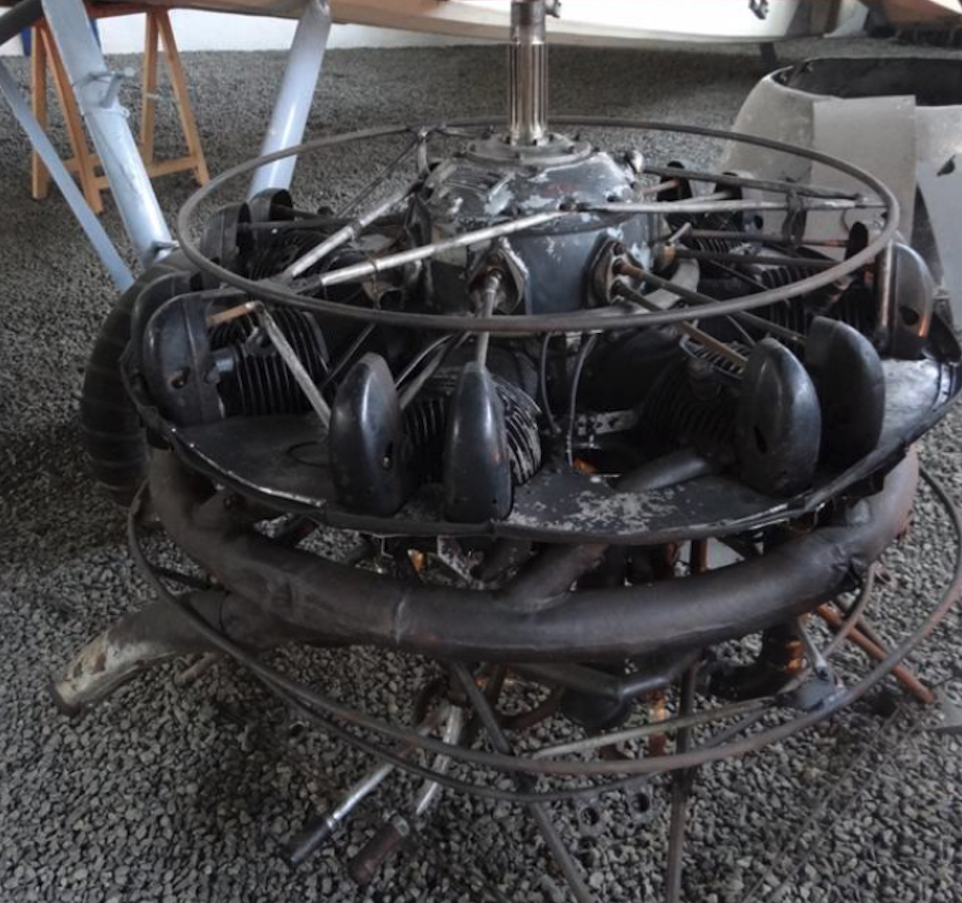
CSS-10. 1946 year.
In 1946, on the initiative of prof. Franciszek Misztala from the Warsaw University of Technology, the Central Aircraft Study (CSS) was established in Warsaw, where he gathered a group of experienced aviation engineers and young students in the field of aviation.
In 1946, the Central Aircraft Study (Centralny Studium Airolotów) received an order from the Ministry of Communications to develop three planes: training, aerobatic and training aircraft. The first was developed in 1947, the design of the training plane, which was named CSS-10, and was designed by Franciszek Misztal and Eng. Stanisław Lassota. The documentation was made with the help of students from the Engineering School of Hipolit Wawelberg and Stanisław Rotwand during one academic year 1946/1947.
Since the construction in the workshops in Okęcie was impossible, the construction of prototypes was started in PZL Mielec. The first prototype was designated CSS-10 A. It was equipped with the Walter Mikron II engine, 48 kW (65 HP). The flight took place on September 3, 1948, by the pilot Ludwik Lech. The plane was then tested at the Central Institute of Aviation, where it was found that it was not a very successful design due to a too weak engine. The weak engine made the take-up run extremely long and the climb poor. The plane had unsatisfactory tug and spin properties. Therefore, he was not suitable for training.
A version of the CSS-10 B, with a covered cabin, was developed almost in parallel. However, the plane did not go beyond the design phase. Only a life-size mock-up was made in PZL Mielec.
As a result of the CSS-10 A tests, the development of a corrected aircraft, designated CSS-10 C, was started. The aircraft was first of all equipped with the Walter Minor 4-III engine with a power of 77 kW (105 HP) and other design improvements. The plane was of course built in PZL Mielec. This prototype made its first flight on April 24, 1949. Then the machine was tested at the Institute of Aviation. It had good performance and was suitable for acrobatics. After carrying out the necessary tests in 1952, it was approved for flight as a training aircraft. The production of 40 aircraft of this type was planned, but due to the lack of engines, the project was eventually abandoned.
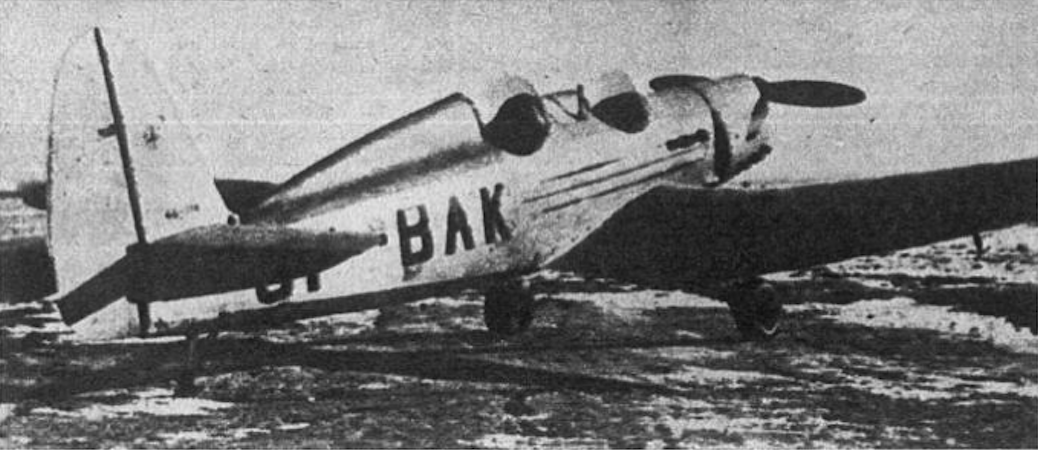
CSS-13 (Po-2). 1948 year.
In view of the urgent demand for a large number of cheap-to-operate training and liaison aircraft and with the Russian blocking the development of Polish post-war structures, it was ordered from above that Poland should launch the licensed production of the well-known Po-2 aircraft designed by Nikalai Nikalaevich Polikarpov.
In 1947, the Central Aircraft Study (CSS) was ordered to develop the license documentation for the Polikarpov Po-2 aircraft. The work on the documentation of the Po-2 aircraft was undertaken by a group of engineers and technicians led by engineer Stanisław Lasota, who translated the documentation into Polish and adapted the machine to the domestic implementation possibilities. Especially in the field of on-board instruments already produced by the Polish Aviation Industry. The Russian documentation included a slightly improved variant of the Po-2 produced by the CCCP in the period 1944 - 1949. This variant of the aircraft was developed by a team led by G. I. Bakshayev, who succeeded N. N. Polikarpov after his death.
The production of the aircraft, under the designation CSS-13, was launched at PZL Mielec in 1948. In December 1948, the prototype of the machine with the serial number 48-013 and registration marks SP-AKZ left the factory. The first flight was made on December 18, 1948, and the pilots were Ludwik Lech and Kazimierz Tyrlik.
The following months were spent on flight tests and the preparation of serial production. On September 2, 1949, the first CSS-13 serial machine was tested. The plane had the serial number 49-015 and registration marks SP-AWO. The pilots were Ludwik Lech and Roman Lewandowski.
Two factories undertook the production of the M-11 D engines; PZL Rzeszów and PZL Wrocław Engine Factory No. 3 "Fasil". The propellers were produced by WSK No. 4 in Okęcie. The instruments and accessories were manufactured at WSK Warszawa II.
In 1949, at the Institute of Aviation, the aircraft was approved for mass production.
The CSS-13, like the Po-2, was characterized by poor performance. He was lifting off the ground quickly, but the power of the propulsion system was definitely lacking. He was incapable of performing higher pilot figures. He was dangerous in deep heels. He forgave many novice pilots' mistakes (due to the low forward speed), but on the condition that the pilot did not approach critical values. Nevertheless, it was suitable for learning basic piloting. Due to its Spartan construction, it was simple and easy to use. Exploitation did not require extensive technical facilities and highly qualified mechanics.
In PZL Mielec in the period 1949 - 1950, 180 CSS-13 machines were built. At PZL Okęcie in the period 1951 - 1955, 320 CSS-13 machines were built.
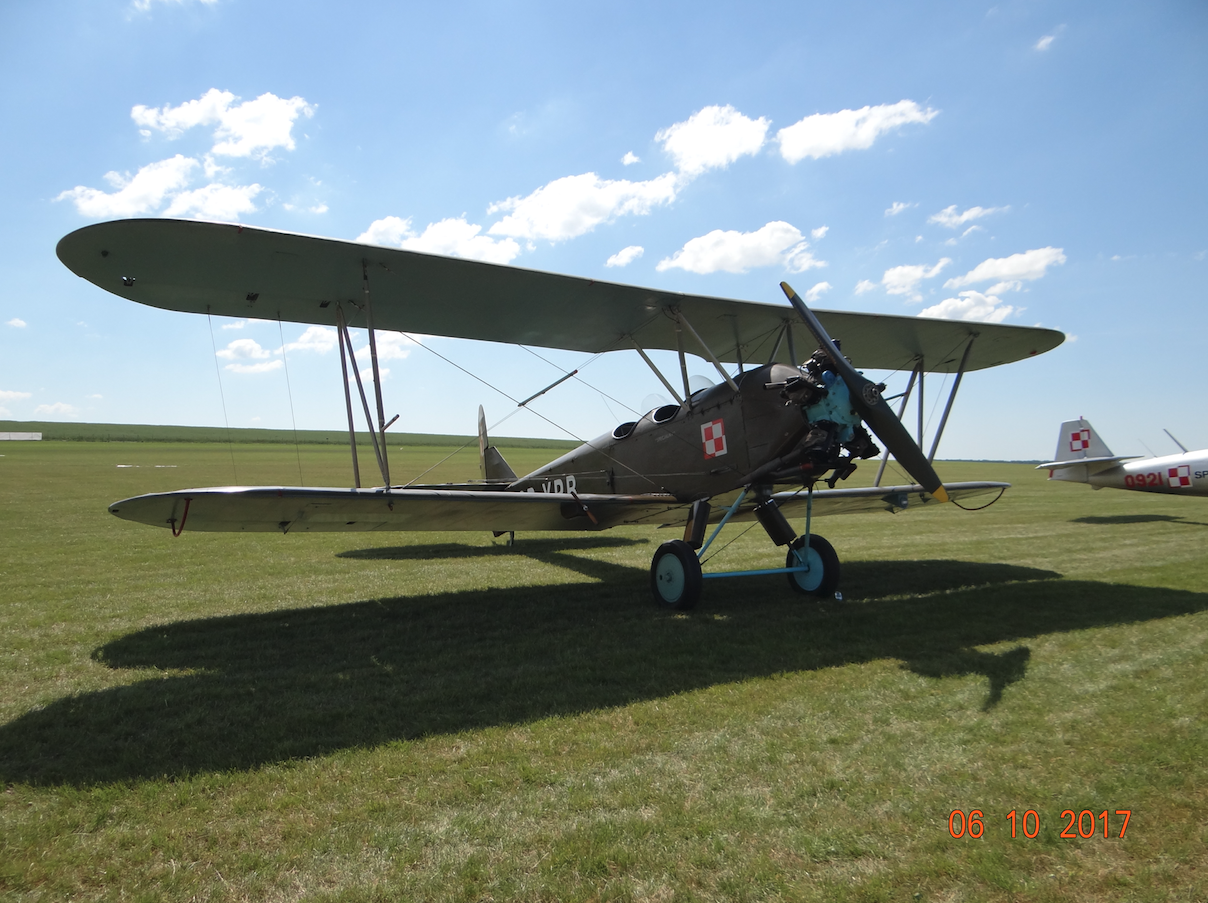
Salamander, glider. 1950.
Salamandra is the name of the Polish so-called transitional glider. The glider was developed in 1935 at the Military Gliding Workshops in Krakow. The necessity to have such a structure, after the Second World War, resulted in reaching for this structure and starting its production in Jeżów Sudecki, next to Jelenia Góra. The salamander was produced in the period 1947 - 1957, 254 examples were built, which served in flying clubs until the beginning of the 1960s. The PZL Okęcie and Mielec plants were involved in the production. PZL Mielec was involved in the construction of the glider in the period 1950 - 1957. The glider was exported, and foreign structures were modeled on its structure. To this day (2012), the glider can be seen at the Polish Aviation Museum in Krakow.
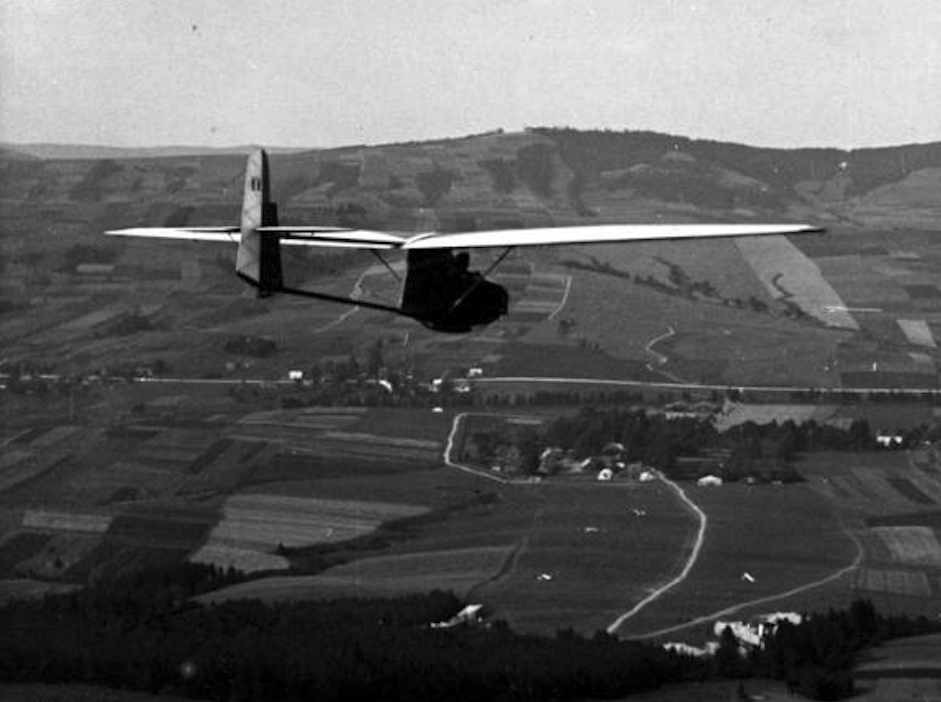
Continued in the next section.
Written by Karol Placha Hetman
